

Global high-mix volume high-speed PCBA manufacturer
9:00 -18:00, Mon. - Fri. (GMT+8)
9:00 -12:00, Sat. (GMT+8)
(Except Chinese public holidays)


Global high-mix volume high-speed PCBA manufacturer
9:00 -18:00, Mon. - Fri. (GMT+8)
9:00 -12:00, Sat. (GMT+8)
(Except Chinese public holidays)
Flexible printed circuit boards bend to fit curved and tight spaces. They use thin layers of copper on a flexible film that lets engineers build smaller devices. You can find them inside cameras, smartphones, and medical tools. The bend and fold give new layout options and allow them to carry signals with high reliability.
Flexible PCBs help cut space and weight in devices. Designers can create gear that looks slim and light while wearable gadgets gain comfort and strength. Makers can reduce assembly steps, thus saving time on production lines. Flexible boards also stand up to motion and stress in daily use. A wide variety of gadgets, including electric cars, drones, and smart homes, use this technology. This growth shapes many new tools for you.
Read on as we look at main types of flexible PCBs, the structure, and their pros and cons. We will also compare them with the more popular rigid PCBs and why you should consider the flexible PCBs.
A flexible printed circuit board (PCB) is a thin electronic board built on a bendable film. It holds copper traces that carry power and signals across the board. The base film may twist or wrap around parts. You can also shape it to fit tight or curved spaces. This freedom makes it ideal when a flat board will not do.
Rigid PCBs sit on a hard, flat substrate that resist bending and hold shape under stress. Flexible PCBs on the other hand bend and flex with motion or tight fits. You can fold them inside compact devices, therefore saving connectors and cables. It also cuts weight and assembly steps. This design change makes many new layouts possible for you.
Flexible boards use films like polyimide or polyester as substrates. Copper foil bonds to that film with special adhesive and a coverlay protects traces while keeping flex. You may see stiffeners added to hold parts and also find cover films for insulation and strength. Layer count and thickness vary by use to balance flex and durability.
You find flexible PCBs in cameras, phones, wearables, and sensors. They fit inside medical scanners, smart glasses, and drones. Automakers use them in dashboards and sensors while spacecraft and satellites rely on their light weight and bend. Flexible boards are also very essential in robots that move.
There are many types of flexible PCBs that are used for different electrical components and devices. Here is a closer look at some of them.
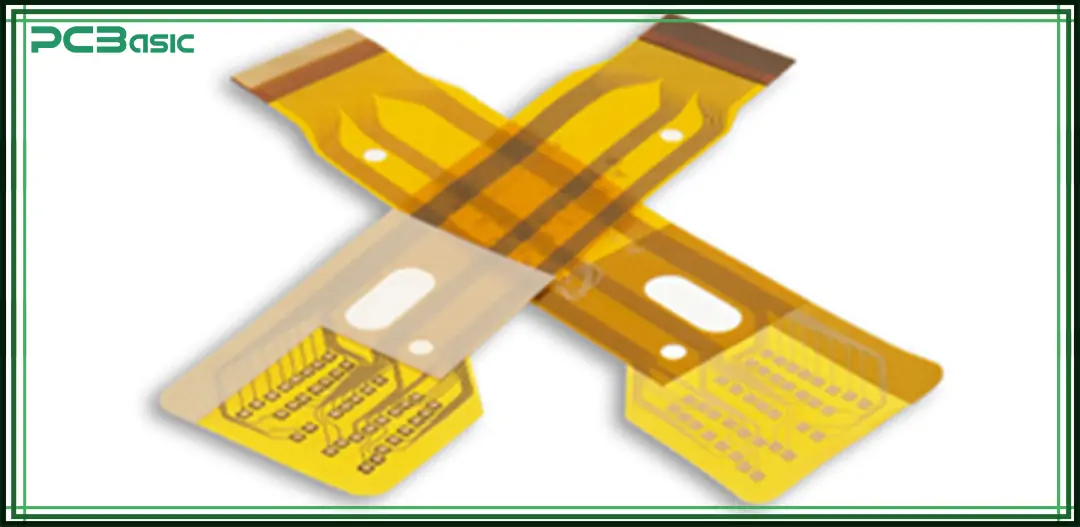
A single-sided flex PCB places copper traces on one side of a thin film. The polyimide film functions as a signal carrier when it bends through small spaces. A coverlay provides protection to the traces and marks which serve as folding points. This layout design produces a thin board with affordable costs for basic electronic pathways.
Engineers usually apply single-sided flex boards for sensor ribbons and LED strips as well as basic signal links. The board will experience one bending motion during manufacturing or remain flat. A single cut in the harnesses and cables reduces both the amount of space required and system weight. The single copper layer also allows fabrication companies to maintain low production costs while keeping manufacturing processes straightforward for short production runs.
The design cannot support complex wiring without additional jumpers. The entire trace path receives your meticulous planning, which eliminates any possibility of crossovers. Additional connections require either jumpers or external wires. The addition of stiffeners leads to increased board thickness because they serve as connectors or part mounting elements.

A double-sided flex PCB holds copper on both sides of its film. Through-holes and microvias connect the various layers of the board. The additional routing capabilities increase within the same dimensional area. Each side of the flex PCB features protective coverlays which also strengthen areas prone to bending. The board maintains its thin profile when dealing with average complexity levels and signal densities.
Double-sided flex PCBs appear inside barcode scanners and camera cables, as well as LED backlights. The additional layer enables better performance by dividing power from data lines. Fabrication processes that include drilling and plating operations drive manufacturing expenses above the levels of single-sided construction. The flexibility in part placement and critical net routing shows gains to designers.
The process of routing at bend zones requires thorough planning to prevent vias from cracking. The fabrication process requires you to position vias in areas that avoid curved sections while employing reinforced openings in the coverlay. The fabricator rules determine trace dimensions for maintaining dependability during bending operations. The established rules enable you to achieve high-density while maintaining long-term reliability in wearable and foldable systems.
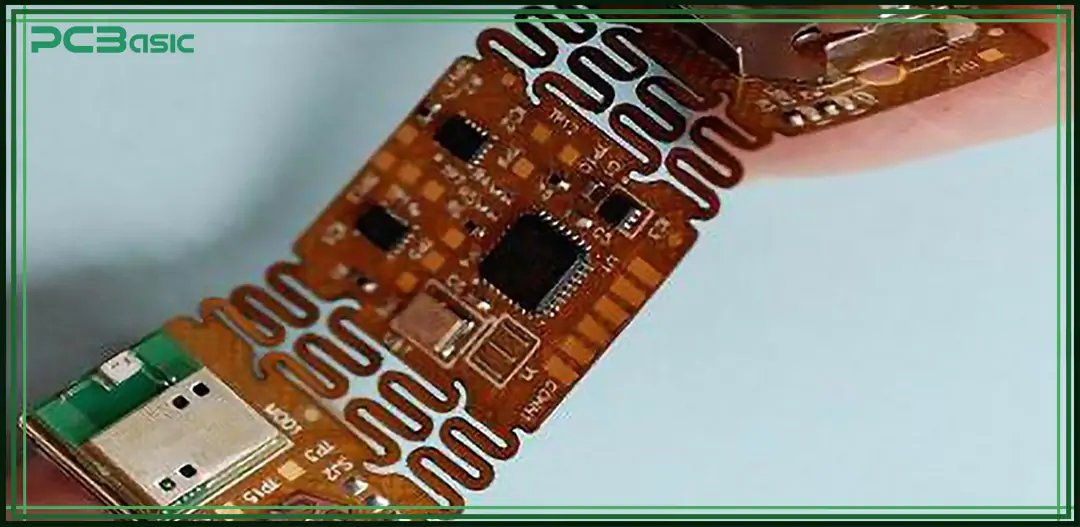
The multi-layered flex PCB combines three or more copper layers inside flexible films. The internal copper layers incorporate power planes and ground planes which function to reduce noise. Connection of layers happens through blind or buried microvias to minimize space requirements. A layer of coverlay bonds across the stack which protects all copper layers from flex wear.
The high-speed circuit designs, along with RF modules and compact camera connections, benefit from this specific type of flex PCB. A thin, flexible package contains layers for power supply and grounding while transmitting signals. Better signal integrity and EMI control are obtained through design trade-offs with increased costs. The fabrication process needs exact alignment, specific lamination pressures, and controlled heat treatment for each adhesive layer.
Early determination of layer counts proves vital because additional layers create both thickness and additional etching processes. Critical nets need to be mapped onto inner layers to achieve protection during movement. The number of layers in the stack-up determines the bend radius limitations, which designers must consider when matching their design requirements to these constraints. The balance between reliability and flexibility can be maintained throughout the board.
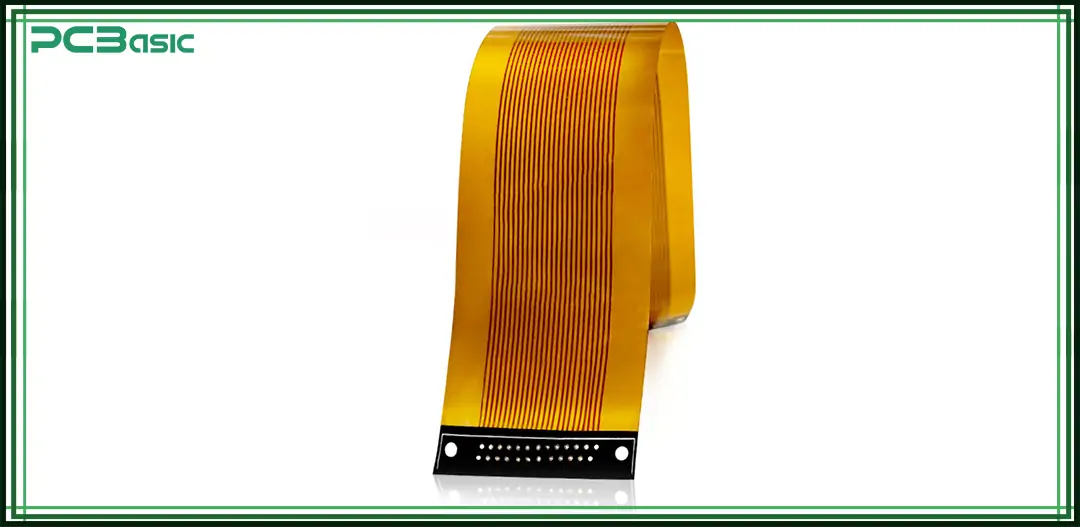
Any electronic circuit that uses flexible substrate film to construct its design qualifies as a flex PCB. A flex PCB design includes basic one-layer configurations along with intricate multi-layer construction types. The selection of materials and copper thickness depends on the expected number of flexes. Static flex boards experience single bending, while dynamic flex boards need to handle continuous bending movements.
Static flex boards specifically serve to support camera and phone assembly folds. The process requires you to bend them and then keep them in their new position. Moving joints and folding displays require dynamic flex boards to operate inside them. Special designs must be implemented for copper stress relief and neutral bend lines. Your board design will endure multiple thousands of bending cycles without sustaining any damage.
Flex PCB selection allows you to find a balance between motion requirements and product expenses. The cost of single-use bends remains lower than the expense of dynamic builds throughout design and production. The selection of appropriate film and coverlay style and trace shape depends on your motion profile and budget requirements and you work with your fabricator to make these choices.
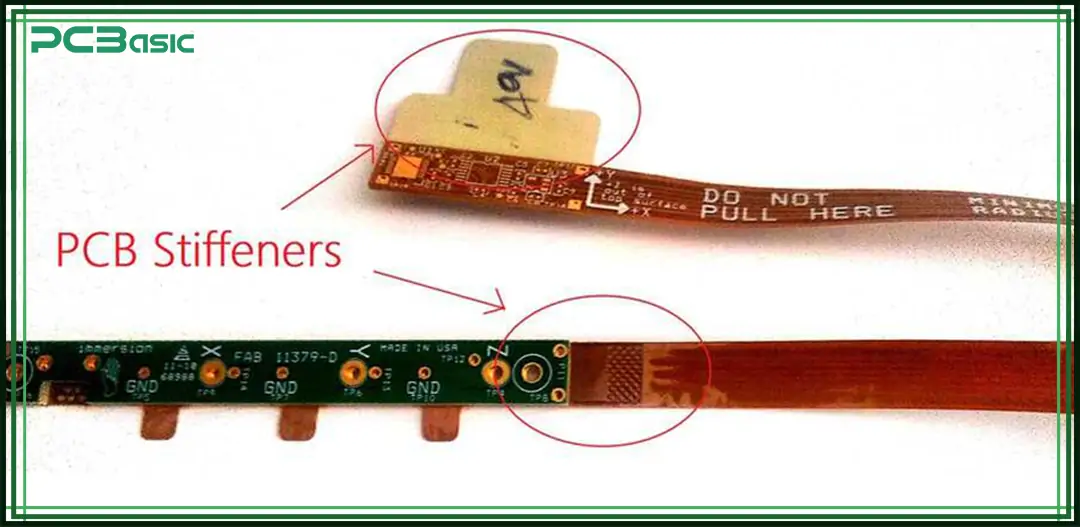
Rigid pads attached to flex PCBs function as stiffeners which support heavy parts and connectors. The stiffener materials consist of FR4 and polyimide and thin metal sheets. Bonds are used to attach stiffeners at locations requiring flat mounting or extra strength. A combination of flexible and rigid zones in the film design enables connector attachment without causing damage to the film material.
The design process requires designers to install stiffeners beneath board edges while also positioning them beneath connector pads and test points. Board gets cut into shape with small openings maintained to ensure nearby bending remains possible. The adhesive layers provide secure attachment of stiffeners while preventing the buildup of delamination or bumps. Transitions between stiffeners are covered with coverlay to achieve smooth bending.
The introduction of stiffeners affects board thickness at specific areas thus you need to verify assembly tool accessibility. You need to modify both solder paste stencils and pick-and-place equipment settings. The additional setup process guarantees parts maintain proper alignment and solder joints maintain their strength despite movements in the surrounding flex film.
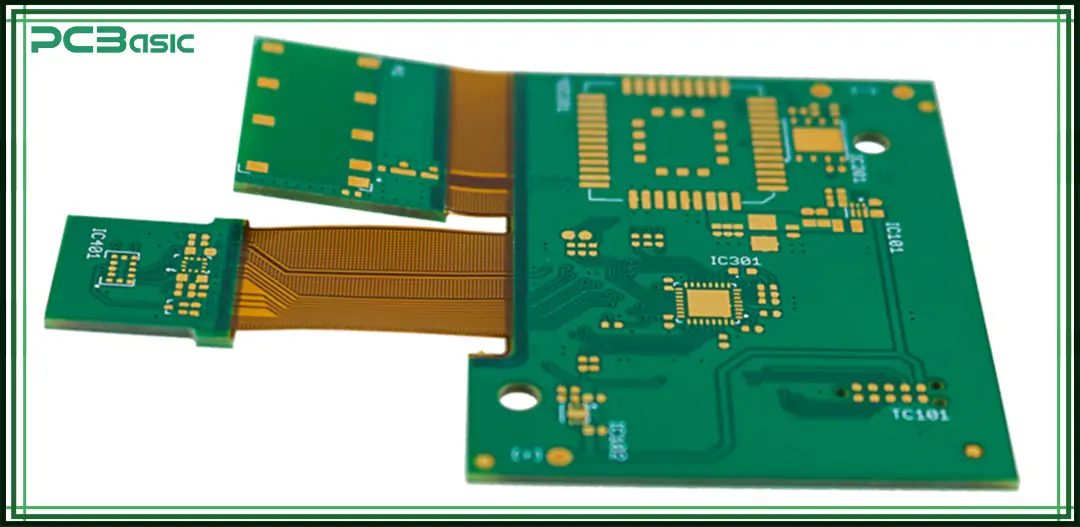
A rigid-flex PCB combines rigid board sections and flex sections in one part. The fabrication process involves placing flexible films between rigid layers before bonding all the layers together. The hybrid design eliminates cable requirements because rigid islands use flex bridges to connect with each other. The board maintains its strength in specific areas but develops flexibility in other sections.
Rigid-flex PCB applications exist in aerospace and medical implants and military equipment. These boards function effectively in demanding environments which require different levels of stiffness. The board contains rigid parts which support heavy components and flex sections that create cable-like structures or folding capabilities. Fabrication requires exact layer bonding and controlled laminating and precise alignment of copper areas.
The design process of rigid-flex begins with establishing mechanical fits and determining bend profiles from the start. Your design determines the flat regions and the areas that need to fold. Your CAD tool needs to support the design of both rigid and flexible stack-up features. The process of careful planning results in a single assembly that reduces weight and space requirements and simplifies assembly steps.
The construction of a flexible board resembles a thin sandwich structure with bendable properties. The main component of this system is a flexible substrate material. Films act as a base where copper foil attaches to create necessary circuits.
The adhesive layers function as binding materials to hold the circuit components in position during bending operations. The copper traces receive protection from wear and moisture through the application of a top coverlay layer.
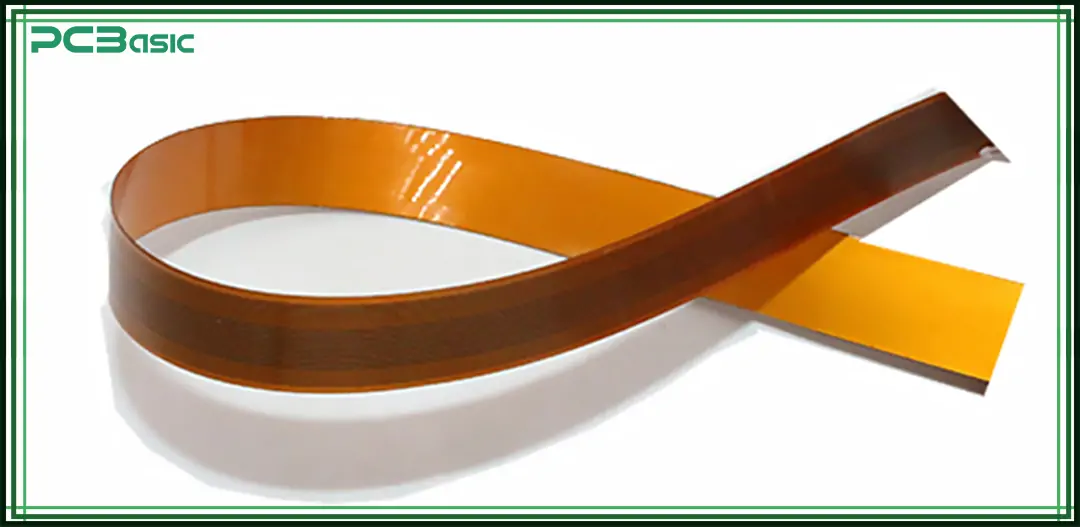
The bend radius determines the maximum curvature of flex boards. The standard measurement for bending flexibility equals ten times the thickness of the board. A 1 mm radius serves as the minimum requirement for bending a 0.1-mm-thick board without causing any damage. A single bend works with five times thickness, yet this could lead to board fractures.
Material choices affect flexibility. The material polyimide maintains its strength properties when heated and supports many flexible cycles. Polyester material serves best when designing static bends. Copper thickness also matters. The bending strength of thin copper increases while the required stress decreases.
Stiffeners serve to maintain flatness and stability of component pads. The stiffeners find their position under connectors and ICs and test points. Solder joints tend to crack when stiffeners are absent during flexing. You should use heat-resistant adhesive to connect stiffeners. The component stays fixed in position while board movement remains blocked.
The most frequently used stiffener materials consist of FR4 and polyimide and aluminum. FR4 offers a low-cost, rigid base. Polyimide stiffeners match substrate flexibility. Aluminum serves as a strong material for connectors that need additional structural support. Stiffeners need shaping before bending while you maintain reveal edges for the process. The placement of stiffeners occurs either beneath components or at the board edges to direct assembly processes.
The addition of stiffeners affects the thickness of specific board areas. Before assembly you need to account for both height requirements and assembly gap allowances. Environmental stress is protected by applying tape or coverlay to the edges of stiffeners. The placement of stiffener edges under tape or coverlay ensures both routing quality and protects the film from peeling at stiffener-flex section junctions.
Plan trace width and spacing early in the layout. Wider traces carry more current but add stiffness. Narrower traces let you bend tighter but limit current. Use consistent spacing to prevent shorting under flex. Keep the minimum values within your fabricator's capabilities.
Map out bend areas and keep sensitive nets away. Place bend lines where the board will curve gently. Avoid placing vias on fold zones. Add relief patterns like dog-bone shapes at trace ends. That spreads stress and prevents cracks when the board flexes.
Place components outside bend zones when you can. Use surface-mount parts with low profiles. If you must put parts on a bend zone, use flexible connectors or zero-insertion-force sockets. Route high-speed or high-precision nets on stable sections to cut signal distortion from flex motion.
Choose CAD tools that handle flex stack-up and bend simulation. Many PCB tools let you draw neutral bend lines and visualize copper stress. Define layer buildup with substrate, adhesive, copper, and coverlay. Export bend data to mechanical CAD for enclosure design. That workflow ensures you catch fit or collision issues early.
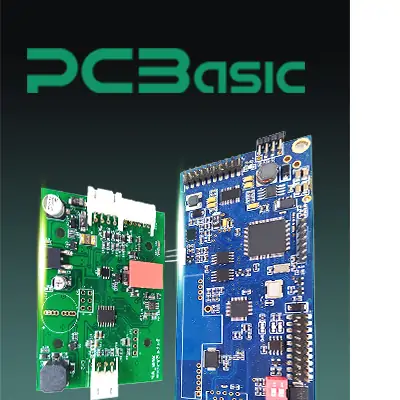 About PCBasic
About PCBasic
Time is money in your projects – and PCBasic gets it. PCBasic is a PCB assembly company that delivers fast, flawless results every time. Our comprehensive PCB assembly services include expert engineering support at every step, ensuring top quality in every board. As a leading PCB assembly manufacturer, we provide a one-stop solution that streamlines your supply chain. Partner with our advanced PCB prototype factory for quick turnarounds and superior results you can trust.
Flexible PCBs come with many advantages that let you design tight layouts with few parts. Here are the main pros.
• It saves space by folding the board into tight spots.
• They cut the weight in your device by using thin films.
• You remove extra cables and connectors from your design.
• They lower assembly steps and speed up production.
• They last longer in moving parts with boards that bend.
• You cut shipping costs with a lighter final product.
Although Flex PCBs come with many advantages, there are a few shortcomings that come with them. Here are some.
• You may pay more in material and special processing fees.
• They need careful handling and custom assembly fixtures.
• They limit how much load you place on bend areas.
• You must add stiffeners for heavy connectors or parts.
• They require testing and inspection to catch flex damage early.
The manufacturing methods of flex and rigid-flex PCBs differ although they serve the same functional requirements. The following table illustrates major distinctions between flex and rigid-flex PCBs.
|
Feature |
Flex PCB |
Rigid-Flex PCB |
|
Structure |
Single bendable film with copper traces |
A mix of rigid boards and flex layers in one board |
|
Bend Areas |
All sections bend (static or dynamic) |
Only flex sections bend and rigid parts stay flat |
|
Component Mounting |
Parts sit on flexible film or use stiffeners |
Parts mount on rigid islands; flex links connect islands |
|
Assembly Steps |
Needs connectors or solder joints |
Fewer external connectors but more layer-bonding steps |
|
Cost |
Lower to medium cost |
Higher cost due to complex build and materials |
|
Use Cases |
Wearables, cameras, slim sensors |
Aerospace, medical implants, military gear |
|
Flex Life |
Good for simple bends and low cycle counts |
Suits repeated cycles offers stable, rigid sections |
The quick-turn flex PCB prototype fabrication service of PCBasic handles any level of prototype complexity. You can send your Gerber files and stack-up specifications using our online platform. Design review from our engineers provides advice about bend radius as well as trace width features alongside coverlay passage dimensions. The communication between you and the manufacturer happens through real-time email and chat services.
PCBasic uses precision laser cutters to mill your prototype before adding copper foil to polyimide films through plotting processes. We follow your requirements to bond coverlay materials and stiffeners. The assembly house within our company performs part soldering operations while conducting functional tests through flex cycle procedures. The report includes photos together with test logs and complete documentation.
Flexible PCB technology uncovers fresh product designs through minimized space usage and reduced weight requirements and simplified assembly procedures. The selection includes single-sided boards and multi-layer and rigid-flex designs depending on your project requirements. Reliability under motion becomes possible through careful planning of materials and traces and bending considerations.
The expertise and rapid prototype creation and production pathway which fabricators such as PCBasic offer their customers. Using the appropriate flex board type enables you to develop slim dynamic devices efficiently and with assurance.
Assembly Enquiry
Instant Quote
Phone contact

+86-755-27218592
In addition, we've prepared a Help Center. We recommend checking it before reaching out, as your question and its answer may already be clearly explained there.
Wechat Support

In addition, we've prepared a Help Center. We recommend checking it before reaching out, as your question and its answer may already be clearly explained there.
WhatsApp Support

In addition, we've prepared a Help Center. We recommend checking it before reaching out, as your question and its answer may already be clearly explained there.
